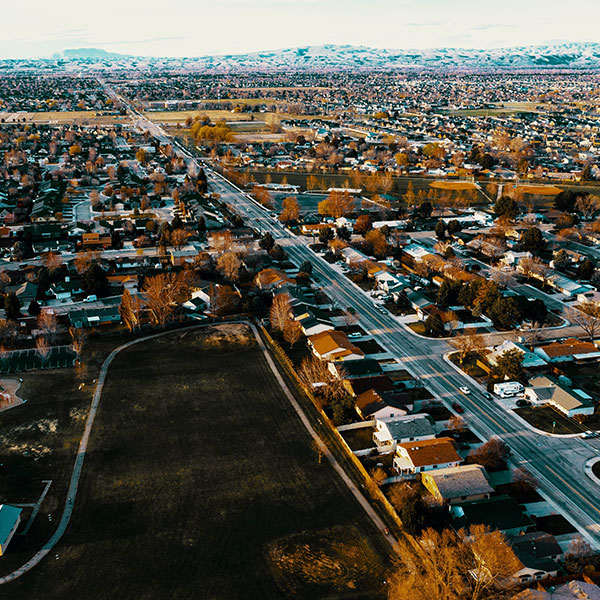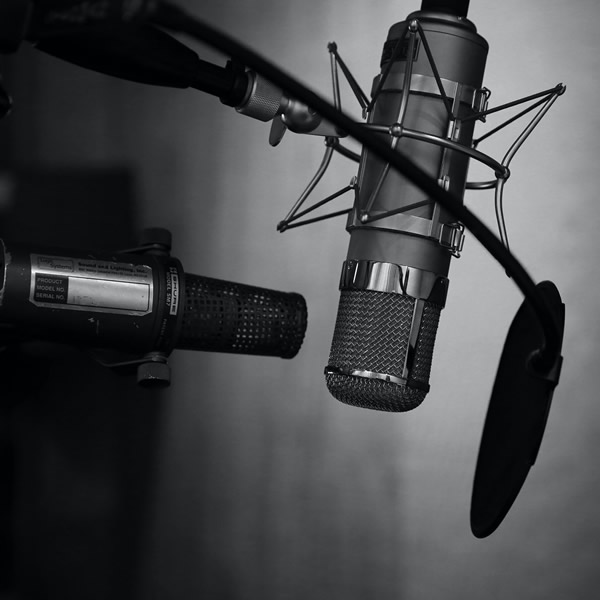Why do we conduct this survey?
Statistics Canada conducts this survey every two years to collect detailed information on water use by manufacturing, mining, and electrical power generating industries in Canada. The survey collects information on who uses water, how much, where and at what cost. These data will be used to develop environmental accounts and indicators.
The survey will ask about the following for your plant, operation and/or facility:
- the sources of water
- the treatment of water before it's used
- the initial uses of water
- the recirculation and reuse of water
- the treatment of water before it's discharged
- the ultimate points of water discharge
- the monthly breakdown of water intake and discharge
- the costs of acquiring water, maintaining and operating the water systems, and discharging water.
Data from this survey are used by all levels of government in establishing informed environmental policies. The private sector also uses this information in the corporate decision-making process.
Your information may also be used by Statistics Canada for other statistical and research purposes.
Your participation in this survey is required under the authority of the Statistics Act.
Other important information
Authorization to collect this information
Data are collected under the authority of the Statistics Act, Revised Statutes of Canada, 1985, Chapter S-19.
Confidentiality
By law, Statistics Canada is prohibited from releasing any information it collects that could identify any person, business, or organization, unless consent has been given by the respondent, or as permitted by the Statistics Act. Statistics Canada will use the information from this survey for statistical purposes only.
Record linkages
To enhance the data from this survey and to reduce the reporting burden, Statistics Canada may combine the acquired data with information from other surveys or from administrative sources.
Data-sharing agreements
To reduce respondent burden, Statistics Canada has entered into data sharing agreements with provincial and territorial statistical agencies and other government organizations, which have agreed to keep the data confidential and use them only for statistical purposes. Statistics Canada will only share data from this survey with those organizations that have demonstrated a requirement to use the data.
Section 11 of the Statistics Act provides for the sharing of information with provincial and territorial statistical agencies that meet certain conditions. These agencies must have the legislative authority to collect the same information, on a mandatory basis, and the legislation must provide substantially the same provisions for confidentiality and penalties for disclosure of confidential information as the Statistics Act. Because these agencies have the legal authority to compel businesses to provide the same information, consent is not requested and businesses may not object to the sharing of the data.
For this survey, there are Section 11 agreements with the provincial and territorial statistical agencies of Newfoundland and Labrador, Nova Scotia, New Brunswick, Quebec, Ontario, Manitoba, Saskatchewan, Alberta, British Columbia, and the Yukon. The shared data will be limited to information pertaining to business establishments located within the jurisdiction of the respective province or territory.
Section 12 of the Statistics Act provides for the sharing of information with federal, provincial or territorial government organizations. Under Section 12, you may refuse to share your information with any of these organizations by writing a letter of objection to the Chief Statistician, specifying the organizations with which you do not want Statistics Canada to share your data and mailing it to the following address:
Chief Statistician of Canada
Statistics Canada
Attention of Director, Enterprise Statistics Division
150 Tunney's Pasture Driveway
Ottawa, Ontario
K1A 0T6
Other sharing agreements
You may also contact us by email at statcan.esdhelpdesk-dsebureaudedepannage.statcan@statcan.gc.ca or by fax at 613-951-6583.
For this survey, there are Section 12 agreements with the statistical agencies of Prince Edward Island, the Northwest Territories and Nunavut as well as with Environment Canada.
For agreements with provincial and territorial government organizations, the shared data will be limited to information pertaining to business establishments located within the jurisdiction of the respective province or territory.
Business or organization and contact information
1. Please verify or provide the business or organization's legal and operating name and correct where needed.
Note: Legal name modifications should only be done to correct a spelling error or typo.
- Legal Name
- The legal name is one recognized by law, thus it is the name liable for pursuit or for debts incurred by the business or organization. In the case of a corporation, it is the legal name as fixed by its charter or the statute by which the corporation was created.
- Modifications to the legal name should only be done to correct a spelling error or typo.
- To indicate a legal name of another legal entity you should instead indicate it in question 3 by selecting 'Not currently operational' and then choosing the applicable reason and providing the legal name of this other entity along with any other requested information.
- Operating Name (if applicable)
- The operating name is a name the business or organization is commonly known as if different from its legal name. The operating name is synonymous with trade name.
2. Please verify or provide the contact information of the designated business or organization contact person for this questionnaire and correct where needed.
Note: The designated contact person is the person who should receive this questionnaire. The designated contact person may not always be the one who actually completes the questionnaire.
- First name
- Last name
- Title
- Preferred language of communication
- Mailing address (number and street)
- City
- Province, territory or state
- Postal code or ZIP code
- Country
- Email address
- Telephone number (including area code)
- Extension number (if applicable)
The maximum number of characters is 5.
- Fax number (including area code)
3. Please verify or provide the current operational status of the business or organization identified by the legal and operating name above.
- Operational
- Not currently operational
Why is this business or organization not currently operational?
- Seasonal operations
- When did this business or organization close for the season?
- When does this business or organization expect to resume operations?
- Ceased operations
- When did this business or organization cease operations?
- Why did this business or organization cease operations?
- Bankruptcy
- Liquidation
- Dissolution
- Other - Specify the other reasons for ceased operations
- Sold operations
- When was this business or organization sold?
- What is the legal name of the buyer?
- Amalgamated with other businesses or organizations
- When did this business or organization amalgamate?
- What is the legal name of the resulting or continuing business or organization?
- What are the legal names of the other amalgamated businesses or organizations?
- Temporarily inactive but will re-open
- When did this business or organization become temporarily inactive?
- When does this business or organization expect to resume operations?
- Why is this business or organization temporarily inactive?
- No longer operating due to other reasons
- When did this business or organization cease operations?
- Why did this business or organization cease operations?
4. Please verify or provide the current main activity of the business or organization identified by the legal and operating name above.
Note: The described activity was assigned using the North American Industry Classification System (NAICS).
Definitions and explanations
This question verifies the business or organization's current main activity as classified by the North American Industry Classification System (NAICS). The North American Industry Classification System (NAICS) is an industry classification system developed by the statistical agencies of Canada, Mexico and the United States. Created against the background of the North American Free Trade Agreement, it is designed to provide common definitions of the industrial structure of the three countries and a common statistical framework to facilitate the analysis of the three economies. NAICS is based on supply-side or production-oriented principles, to ensure that industrial data, classified to NAICS, are suitable for the analysis of production-related issues such as industrial performance.
The target entity for which NAICS is designed are businesses and other organizations engaged in the production of goods and services. They include farms, incorporated and unincorporated businesses and government business enterprises. They also include government institutions and agencies engaged in the production of marketed and non-marketed services, as well as organizations such as professional associations and unions and charitable or non-profit organizations and the employees of households.
The associated NAICS should reflect those activities conducted by the business or organizational units targeted by this questionnaire only, as identified in the 'Answering this questionnaire' section and which can be identified by the specified legal and operating name. The main activity is the activity which most defines the targeted business or organization's main purpose or reason for existence. For a business or organization that is for-profit, it is normally the activity that generates the majority of the revenue for the entity.
The NAICS classification contains a limited number of activity classifications; the associated classification might be applicable for this business or organization even if it is not exactly how you would describe this business or organization's main activity.
Please note that any modifications to the main activity through your response to this question might not necessarily be reflected prior to the transmitting of subsequent questionnaires and as a result they may not contain this updated information.
The following is the detailed description including any applicable examples or exclusions for the classification currently associated with this business or organization.
Description and examples
- This is the current main activity.
- This is not the current main activity.
Please provide a brief but precise description of this business or organization's main activity.
e.g., breakfast cereal manufacturing, shoe store, software development
Main activity
5. You indicated that is not the current main activity. Was this business or organization's main activity ever classified as: {specified activity}?
- Yes
- No
When did the main activity change?
Date
6. Please search and select the industry classification code that best corresponds to this business or organization's main activity.
Select this business or organization's activity sector (optional)
- Farming or logging operation
- Construction company or general contractor
- Manufacturer
- Wholesaler
- Retailer
- Provider of passenger or freight transportation
- Provider of investment, savings or insurance products
- Real estate agency, real estate brokerage or leasing company
- Provider of professional, scientific or technical services
- Provider of health care or social services
- Restaurant, bar, hotel, motel or other lodging establishment
- Other sector
7. You have indicated that the current main activity of this business or organization is: {specified activity}. Are there any other activities that contribute significantly (at least 10%) to this business or organization's revenue?
- Yes, there are other activities.
- No, that is the only significant activity.
Please provide a brief but precise description of this business or organization's secondary activity.
e.g., breakfast cereal manufacturing, shoe store, software development
8. Approximately what percentage of this business or organization's revenue is generated by each of the following activities?
When precise figures are not available, please provide your best estimates.
Approximately what percentage of this business or organization's revenue is generated by each of the following activities?
Table summary
This table contains no data. It is an example of an empty data table used by respondents to provide data to Statistics Canada.
| |
Percentage of revenue |
|---|
| Main activity |
|
|---|
| Secondary activity |
|
|---|
| All other activities |
|
|---|
| Total percentage |
|
|---|
General Information
Definitions and explanations
- General
- This section gathers general information about the plant/operation/facility.
- Directives
- It is not uncommon for the operating situation and water consumption of a plant/operation/facility to change in a calendar year, for example, due to the seasonal nature of the operation, a temporary shutdown, or closure for renovations. If water was consumed at the plant/operation/facility during 20xx, even during a temporary closure, select “Yes” and specify the month the plant/operation/facility was in operation.
- Glossary
- In operation: For the purpose of this survey, the “in operation” category includes days when the plant/operation/facility is temporarily closed, but water has been consumed in some way (e.g., water consumption for sanitary services, such as toilets or cleaning, or for cooling, condensation and steam, industrial water, or pollution control).
- Sanitary service or domestic use: Water used for such purposes as drinking, personal food preparation, flushing toilets, washing clothing and dishes, bathing and watering lawns and gardens.
- Cooling, condensing and steam: This is water which does not come in direct contact with the products, materials or by-products of the processing operation. Include pass-through water used in the operation of cooling or process equipment (including air conditioning) and water introduced into boilers for the production of steam for either process operations or electric power.
- Process water: This is water that serves in any level of the manufacturing process. Include all water which comes in direct contact with products and/or materials, water used in the sanitation of process equipment, water consumed in milling and special processes, water included in final output and water originally used for another purpose but now in final use as process water.
Important reminder for this questionnaire:
When asked in this questionnaire to provide information about the plant/operation/facility, please refer to the customized description of the plant location provided in the electronic questionnaire.
Reporting period:
For the purpose of this survey, all reported information should be for the calendar year from January 1, 20xx to December 31, 20xx.
Reporting instructions:
- when exact figures are not available, please provide your best estimate
- if the water volume is zero, please enter '0' in the corresponding box.
1. Was this plant/operation/facility in operation at least one day during the 20xx calendar year?
For the purpose of this survey, "in operation" includes plants/operations/facilities that are temporarily closed but there was some form of water use
e.g., water for sanitary services like toilets and janitorial services, water use for cooling, condensing and steam, process water or pollution control.
Definitions and explanations
- General information
- This section collects general information about the plant/operation/facility
- Instructions
- It is not uncommon for the operational status and water use of a plant/operation/facility to change during a calendar year, for example, due to the seasonal nature of the operation, a temporary stop in production, or closure for refurbishment. If there was any water use at the plant/operation/facility during 20xx, even during a period of temporary closure, select "Yes" and specify the month(s) where the plant/operation/facility was operational.
- Glossary
- Operate: For the purpose of this survey, "in operation" includes days where the plant/operation/facility is temporarily closed but there was some form of water use (e.g., water for sanitary services like toilets and janitorial services, water use for cooling, condensing and steam, process water or pollution control).
All months
- January
- February
- March
- April
- May
- June
- July
- August
- September
- October
- November
- December
2. Was the plant/operation/facility specified below located in {the specified operating province} during the 20xx calendar year? (For Fossil-Fuel and Nuclear Electric Power Generating Plants, and Mineral Extraction Industries.)
If the plant/operation/facility was situated in more than one location during 20xx, please report the province or territory for the last location of the plant/operation/facility in the 20xx calendar year.
This information is being confirmed to ensure the reported figures contribute to the correct provincial or territorial estimates.
Definitions and explanations
- Instructions
- It is possible that the address on file for the location of plant/operation/facility is incorrect or that the plant/operation/facility moved during 20xx. If the plant/operation/facility was situated in more than one location during 20xx, the question should report the province or territory for the last location of the plant/operation/facility in 20xx.
In which province or territory was the plant/operation/facility last located?
- Newfoundland and Labrador
- Prince Edward Island
- Nova Scotia
- New Brunswick
- Quebec
- Ontario
- Manitoba
- Saskatchewan
- Alberta
- British Columbia
- Yukon
- Northwest Territories
- Nunavut
3. Was {the specified postal code} the postal code for the location specified below during the 20xx calendar year? (For Manufacturing Industries.)
If the plant/operation/facility was situated in more than one location during 20xx, please report the postal code for the last location of the plant/operation/facility in the 20xx calendar year.
This information is being confirmed to ensure the reported figures contribute to the estimates for the correct drainage region.
Definitions and explanations
- Instructions
- It is possible that the address on file for the location of plant/operation/facility is incorrect or that the plant/operation/facility moved during 20xx
e.g., the relocation of a manufacturing facility. If the plant/operation/facility was situated in more than one location during 20xx, the question should report the postal code for the last location of the plant/operation/facility in 20xx.
- Glossary
- Drainage region: For the purpose of the Industrial Water Survey a drainage region is one of 25 geographic units, covering all of Canada. Each drainage region is based on a drainage basin, or a grouping of drainage basins, which represent an area of land that generally drains to the streams and rivers that make up the hydrological network of Canada.
What was the postal code?
Example: A9A 9A9
Postal code
4. In 20xx, what was the average number of people working on the premises of this plant/operation/facility in full-time equivalents (FTE)?
Include permanent, contract and casual employees that work on the premises.
Employment may be full-time or part-time, FTE converts part-time jobs to full-time jobs based on the hours worked. For example, if out of four employees employed at your plant/operation/facility, one works full-time and the remaining three work the equivalent of half of a full time job, then: FTE employment = 1 + ½ + ½ + ½ = 2.5.
When exact figures are not available, please provide your best estimate.
Definitions and explanations
- Instructions
- Include permanent, contract, casual, unionized and non-unionized employees that work at the plant/operation/facility specified below.
- Glossary
- Full-time equivalent (FTE) employment: FTE employment represents the number of full-time equivalent (FTE) jobs. Since employment may by full-time or part-time, FTE converts part-time jobs to full-time jobs based on the hours worked. For example, two part-time jobs of twenty hours per week would be equivalent to one full-time job at forty hours per week.
- Example calculation: If out of four employees employed at the plant/operation/facility, one works full-time and the remaining three work the equivalent of half of a full time job, then: FTE employment = 1 + ½ + ½ + ½ = 2.5.
Number of people
e.g., 2.5
5. How many days did this plant/operation/facility operate in 20xx?
For the purpose of this survey, "in operation" includes plants/operations/facilities that are temporarily closed but there was some form of water use
e.g., water for sanitary services like toilets and janitorial services, water use for cooling, condensing and steam, process water or pollution control.
For the purpose of this survey, "days" refers to calendar days.
When exact figures are not available, please provide your best estimate.
Definitions and explanations
- Instructions
- Do not consider the hours of operation when reporting the number of calendar days this plant/operation/facility operated in 20xx. For example, a plant/operation/facility that operates for 24 hours in a calendar day and a plant/operation/facility that operates for 1 hour in a calendar day, are both considered 1 day of operation.
- Glossary
- Operate: For the purpose of this survey, "in operation" includes days where the plant/operation/facility is temporarily closed but there was some form of water use (e.g., water for sanitary services like toilets and janitorial services, water use for cooling, condensing and steam, process water or pollution control).
Days
6. How many weeks did this plant/operation/facility operate in 20xx?
For the purpose of this survey, "in operation" includes plants/operations/facilities that are temporarily closed but there was some form of water use
e.g., water for sanitary services like toilets and janitorial services, water use for cooling, condensing and steam, process water or pollution control.
When exact figures are not available, please provide your best estimate.
Definitions and explanations
- Glossary
- Operate: For the purpose of this survey, "in operation" includes weeks where the plant/operation/facility is temporarily closed but there was some form of water use (e.g., water for sanitary services like toilets and janitorial services, water use for cooling, condensing and steam, process water or pollution control).
Weeks
7. On average, how many days per week did this plant/operation/facility operate in 20xx?
For the purpose of this survey, "days" refers to calendar days.
When exact figures are not available, please provide your best estimate.
Definitions and explanations
- Instructions
- Do not consider the hours of operation when reporting the average number of calendar days per week this plant/operation/facility operated in 20xx. For example, a plant/operation/facility that operates for 24 hours in a calendar day and a plant/operation/facility that operates for 1 hour in a calendar day, are both considered 1 day of operation.
- Glossary
- Operate: For the purpose of this survey, "in operation" includes days where the plant/operation/facility is temporarily closed but there was some form of water use (e.g., water for sanitary services like toilets and janitorial services, water use for cooling, condensing and steam, process water or pollution control).
Days per week
8. On average, how many hours did this plant/operation/facility operate in a day in 20xx?
For the purpose of this survey, "days" refers to calendar days.
When exact figures are not available, please provide your best estimate.
Definitions and explanations
- Glossary
- Operate: For the purpose of this survey, "in operation" includes days where the plant/operation/facility is temporarily closed but there was some form of water use (e.g., water for sanitary services like toilets and janitorial services, water use for cooling, condensing and steam, process water or pollution control).
Hours
Unit of measure
Definitions and explanations
- Instructions
- If you select a multiple of a unit of measure as your reporting unit, please take care to enter the correct decimal values or number of zeros when reporting water volumes in this questionnaire. For example, if thousands of imperial gallons is specified as the unit of measure, note that a reported quantity of 3.5 = 3,500 (3.5 thousand) imperial gallons, whereas a reported quantity of 3,500 = 3,500,000 (3.5 million) imperial gallons.
9. What unit of measure will be used to report water volumes throughout this questionnaire?
Definitions and explanations
- General
- This section gathers the unit of measure used to report water volumes throughout this questionnaire.
- Instructions
- If more than one unit of measure is used by the plant/operation/facility, select one unit of measure and convert all volumes from the other units of measure into the selected one.
- Cubic metres, or a multiple of cubic metres
- Litres, or a multiple of litres
- Imperial gallons, or a multiple of imperial gallons
- US gallons, or a multiple of US gallons
- Cubic feet, or a multiple of cubic feet
Select the multiple of cubic metres you will use to report water volumes throughout this questionnaire.
- Cubic metres (m³)
- Tens of cubic metres (10 m³)
- Hundreds of cubic metres (100 m³)
- Thousands of cubic metres (1,000 m³)
- Millions of cubic metres (1,000,000 m³)
Select the multiple of litres you will use to report water volumes throughout this questionnaire.
- Litres (L)
- Hundreds of litres (100 L)
- Thousands of litres (1,000 L)
- Millions of litres (1,000,000 L)
- Hectolitres (hL)
- Kilolitres (kL)
- Megalitres (ML)
Select the multiple of imperial gallons you will use to report water volumes throughout this questionnaire.
- Imperial gallons (imp. gal.)
- Hundreds of imperial gallons (100 imp. gal.)
- Thousands of imperial gallons (1,000 imp. gal.)
- Millions of imperial gallons (1,000,000 imp. gal.)
Select the multiple of US gallons you will use to report water volumes throughout this questionnaire.
- US gallons (US gal.)
- Hundreds of US gallons (100 US gal.)
- Thousands of US gallons (1,000 US gal.)
- Millions of US gallons (1,000,000 US gal.)
- Select the multiple of cubic feet you will use to report water volumes throughout this questionnaire.
- Cubic feet (cu. ft.)
- Tens of cubic feet (10 cu. ft.)
- Hundreds of cubic feet (100 cu. ft.)
Water intake by source and type
Important information: Water intake is new water that is introduced into this plant/operation/facility for the first time regardless of source or quality. For example:
- water intake for sanitary or domestic use
e.g., flushing toilets, drinking or watering lawns and gardens
- water supplied from an adjacent industry
- self-supplied water
e.g., river, well, ocean or rain and storm run-off water which is diverted into storage ponds or holding facilities for later use by the plant/operation/facility
- water pumped to de-water a mine or quarry which is diverted into storage ponds or holding facilities for later use by the operation.
Exclude:
- Water pumped to de-water a mine or quarry only to allow operations to continue, i.e., water is not stored for later use by the operation
- Water intake for the purpose of supplying water to adjacent or tenant industries or municipalities
- water contained in other liquid products brought into the plant/operation/facility
e.g., paints, beverages
- bottled drinking water.
10. In 20xx, which of the following types and sources of intake water were used?
Select all that apply.
Definitions and explanations
- Glossary
- Water source: The location or place from which intake water is obtained.
- Water intake: Water introduced for the first time into the plant/operation/facility regardless of source or quality.
- Water type (intake): For the purposes of this survey, there are two types of intake water: freshwater and saline / brackish water.
- Freshwater: Fresh water, with an average of 900 parts per million (PPM, sometimes also reported in mg/L) or less of total dissolved solids, has a very low mineral or foreign-body content. Include water from public utilities, water from wells and springs (unless saline) and water from lakes, streams and rivers.
- Saline / brackish (salt) water: Saline water, with an average of more than 900 PPM of total dissolved solids, is also called 'salt', 'brackish' or 'sea' water. The most common sources are oceans or seas and their estuaries, however, salt water can also be found in water on or near salt flats, as is the case in Alberta, where it is not uncommon for oil and gas wells to encounter saline water while drilling.
- Public utility: A system of drawing, treating and distributing water to residences and business facilities within the municipality. A fee is usually charged, based on the volume of water intake.
- Self-supplied surface water system: The plant/operation/facility draws water from a lake, river, pond or stream through their own system of pumps, pipes, hoses, etc. (Surface water: water found above ground).
- Self-supplied groundwater: The plant/operation/facility draws water from a well or spring through their own system of pumps, pipes, hoses, etc. (Groundwater: water found underground, in the saturated zone below the water table).
- Self-supplied tide water: The plant/operation/facility draws water from the ocean (including ocean bays or estuaries) through their own system of pumps, pipes, hoses, etc.
- Other water sources: While uncommon, other sources include truck deliveries of water from a private supplier (either bulk or bottled), rain water (both cisterns and storm run-off holding tanks) and glacial / snow-melt run-off water. Exclude bottled water intended for personal consumption.
Freshwater
For the purpose of this survey, freshwater contains an average of 900 parts per million (ppm) or less of total dissolved solids.
- Public utility
i.e., a municipal or city system of drawing, treating and distributing water
- Self-supplied surface water system
e.g., lake, river
- Self-supplied groundwater system
e.g., well, spring
- Other freshwater sources
e.g., delivery of water from a private supplier, an adjacent industry, rain water, run-off water.
Exclude bottled water intended for personal consumption.
- Specify other freshwater sources.
Saline or brackish water
For the purpose of this survey, saline or brackish water contains an average of more than 900 parts per million (ppm) of total dissolved solids.
- Self-supplied groundwater system
e.g., well, spring
- Self-supplied tide water (salt water) body
e.g., estuary, bay, ocean
- Other saline or brackish water sources
e.g., delivery of water from a private supplier, an adjacent industry
- Specify other saline or brackish water sources.
11. Please report the volume of intake water for the following types and sources.
When exact figures are not available, please provide your best estimate.
Please report the volume of intake water for the following types and sources.
Table summary
This table contains no data. It is an example of an empty data table used by respondents to provide data to Statistics Canada.
| |
20xx volume of intake water |
|---|
| Freshwater |
|
|---|
| Public utility |
|
|---|
| Self-supplied surface water system |
|
|---|
| Self-supplied groundwater system |
|
|---|
| Other freshwater sources |
|
|---|
| Subtotal volume of freshwater intake in 20xx |
|
|---|
| Saline or brackish water |
|
|---|
| Self-supplied groundwater system |
|
|---|
| Self-supplied tide water (salt water) body |
|
|---|
| Other saline or brackish sources |
|
|---|
| Subtotal volume of saline or brackish water intake in 20xx |
|
|---|
| Total volume of intake water in 20xx |
|
|---|
Treatment of intake water
12. In 20xx, which methods did this plant/operation/facility use to treat any intake water prior to its initial use?
It is possible to have a treatment that applies to more than one treatment category
e.g., a substance for scale control, which deals with both alkalinity and corrosion. In such instances, all applicable treatment types should be selected.
Select all that apply.
Definitions and explanations
- General
- This section collects information about specific treatments to intake water in preparation for use. The treatment of used water in preparation for discharge is reported later in the questionnaire and grouped by more general treatment categories.
- Treatment of self-supplied intake water is often required before it can be used, whether for sanitary / domestic purposes or as process water. Treatment is required less often for intake water supplied by a public utility.
- Some facilities treat all of their intake water (e.g., screening of intake water at the source); others treat only a portion of it, for specific uses.
- Instructions
- Include third-party water treatment - where intake water is routed to a treatment facility that belongs to a separate company (whether same or different ownership as the surveyed plant/operation/facility). Exclude the treatment of water by a public utility before it is introduced to the plant/operation/facility for the first time, and the treatment of used water, waste water or effluent.
- It is possible to have a multi-purpose chemical treatment that applies to more than one treatment category (e.g., a substance for scale control, which deals with both alkalinity and corrosion). In such instances, all applicable treatment types should be selected.
- Treatment for specific conditions not listed here (e.g., sludge, scale, etc.) should be categorized in this section according to the type of treatment used.
- Glossary
- Public utility: A system of drawing, treating and distributing water to residences and business facilities within the municipality. A fee is usually charged, based on the volume of water intake.
- Screening: In the screening process, water is passed through a screen barrier that removes larger pieces of solid matter from the water. Include the bulk screening of intake water at the source.
- Filtration: In the filtration process, water is passed through a filter barrier (membrane, sand, charcoal, etc.) that removes smaller particles of solid matter from the water.
In many industrial operations, filtration and screening systems can be very similar. The defining difference is in the size of the particles removed by the process; filtered particles are much smaller than screened particles.
Common purposes: de-chlorination (beverage industry).
- Chlorination and disinfection: In this process, chlorine and/or other disinfectants (e.g., calcium hypo-chlorite) are added to the water.
Common purposes: sterilization, control of zebra mussels
- Corrosion and slime control: It is vital for heat exchange equipment to be kept free of insulating deposits that promote high energy consumption.
The four principal sources of these deposits in the case of water cooled systems are: scale, corrosion, biological growths and sludge (these factors have a direct effect on equipment life)
Application: heat exchange equipment
- Alkalinity control: A chemical treatment to attain a specifically-required pH level.
Application: cooling towers, boilers
Hardness or water softening: The removal of calcium and magnesium from water to reduce hardness.
Application: cooling towers, boiler feed water
Hardness treatment can also involve the addition of minerals to correct for water that is too soft for its intended purpose.
Can apply to: Breweries
- Coagulation or flocculation: Coagulation is the de-stabilisation of colloid particles by the addition of a reactive chemical, called a coagulant. This happens through neutralization of the charges.
Flocculation is the accumulation of the de-stabilized particles and micro-flakes, and subsequently, the formation of sizeable flakes. One must add another chemical, called a flocculent, in order to facilitate the formation of flakes called flocs. These combined processes serve to absorb unwanted particles in order to easily remove them from the water.
Used in: beverage industry
- Other category of treatment: Only treatments not listed above should be listed here; they must be specified.
Other treatments can include: electrolysis, anaerobic, chelation, desalination (usually accomplished by reverse osmosis & distillation), etc.
- Screening
The removal of larger pieces of solid matter from water using a screen barrier. Includes the bulk screening of intake water at the source.
- Filtration
The removal of smaller pieces of solid matter from water using a filter barrier.
- Chlorination - disinfection
The addition of chlorine or other disinfectants to water.
- Corrosion and slime control
Includes the control of scale, corrosion, biological growth and sludge.
- Alkalinity control
The chemical treatment of water to attain required pH level.
- Hardness or water softening
The removal of calcium and magnesium from water to reduce hardness.
- Coagulation or flocculation
The absorption of particles in order to easily remove them from water.
- Other category of treatment - Item 1
Other treatments include electrolysis, de-salination etc.
Specify other category of treatment - Item 1
- Other category of treatment - Item 2
Other treatments include electrolysis, de-salination etc.
Specify other category of treatment - Item 2
- Other category of treatment - Item 3
Other treatments include electrolysis, de-salination etc.
Specify other category of treatment - Item 3
- No treatment applied to intake water
13. Please report the volume of intake water treated within this plant/operation/facility prior to initial use for the following methods of treatment.
Exclude the treatment of used water, waste water or effluent. If a given volume of water undergoes more than one treatment, please report the volume of water for each type of treatment.
When exact figures are not available, please provide your best estimate.
Please report the volume of intake water treated within this plant/operation/facility prior to initial use for the following methods of treatment.
Table summary
This table contains no data. It is an example of an empty data table used by respondents to provide data to Statistics Canada.
| |
20xx volume of intake water treated |
|---|
| Screening |
|
|---|
| Filtration |
|
|---|
| Chlorination - disinfection |
|
|---|
| Corrosion and slime control |
|
|---|
| Alkalinity control |
|
|---|
| Hardness or water softening |
|
|---|
| Coagulation or flocculation |
|
|---|
| Other category of treatment - Item 1 |
|
|---|
| Other category of treatment - Item 2 |
|
|---|
| Other category of treatment - Item 3 |
|
|---|
Water intake by initial use
14. Of the total volume of water taken in by this plant/operation/facility in 20xx, what were the initial uses of intake water?
Exclude recirculated or reused water, i.e., water that leaves a particular subsystem and re-enters it or is used in another subsystem.
Select all that apply.
Definitions and explanations
- General
- This section categorizes the volume of intake water according to its initial use.
- Instructions
- Water for initial use outside of the listed categories should be reported using the Other purpose or use - specify response category and a description should be provided.
- Exclude recirculated or reused water except water originally used for another purpose but now in use as process water.
- Glossary
- Process water: This is water that serves in any level of the manufacturing process. Include all water which comes in direct contact with products and/or materials, water used in the sanitation of process equipment, water consumed in milling and special processes, water included in final output and water originally used for another purpose but now in final use as process water.
- Cooling, condensing and steam: This is water which does not come in direct contact with the products, materials or by-products of the processing operation. Include pass-through water used in the operation of cooling or process equipment (including air conditioning) and water introduced into boilers for the production of steam for either process operations or electric power.
- Sanitary service or domestic use: Water used for such purposes as drinking, personal food preparation, flushing toilets, washing clothing and dishes, bathing and watering lawns and gardens.
- Other purpose or use: Volumes for other purposes or uses, though unlikely, should be reported here, with the type of use clearly specified. Exclude water pumped by the plant/operation/facility, and intended for initial use outside the plant/operation/facility.
- Recirculated or reused water: Water used more than once at the plant/operation/facility; applies mainly to cooling and processing activities. It only refers to water that leaves a particular subsystem and is then recirculated or reused in the same sub-system, or used in a different subsystem. Exclude, closed-loop systems.
- Closed-loop systems: Cooling systems where water is withdrawn from a source, circulated through heat exchangers, then cooled and recycled. Subsequent water withdrawals are used to replace water lost to evaporation, blow-down, drift, leakage and, accordingly, results in a much smaller return flow than once-through cooling.
- Process water (For Mineral Extraction Industries and Manufacturing Industries.)
i.e., water that serves in any level of the mining/manufacturing process
Include water which:
- comes in direct contact with products and/or materials
- is used in the sanitation of process equipment
- is consumed in milling and special processes
- is included in final output
- has been used for another purpose, and is undergoing its final use as process water.
- Cooling, condensing and steam
i.e., water which does not come in direct contact with the products, materials or by-products of the processing operation
Include:
- pass-through water used in the operation of cooling or process equipment (including air conditioning)
- water introduced into boilers for the production of steam for either process operations or electric power.
- Pollution control (For Fossil-Fuel and Nuclear Electric Power Generating Plants.)
i.e., any process that inhibits or reduces the production of pollutants during the course of power generation
e.g., wet flue gas de-sulphurization
- Sanitary service or domestic use
i.e., water used for toilets, janitorial services, lawn watering, washing of vehicles
- Other purpose or use - Item 1
Exclude water pumped by the plant/operation/facility, and intended for initial use outside the plant/operation/facility.
Specify other purpose or use - Item 1
- Other purpose or use - Item 2
Exclude water pumped by the plant/operation/facility, and intended for initial use outside the plant/operation/facility.
Specify other purpose or use - Item 2
- Other purpose or use - Item 3
Exclude water pumped by the plant/operation/facility, and intended for initial use outside the plant/operation/facility.
Specify other purpose or use - Item 3
15. Please report the volumes of intake water by initial use.
Exclude recirculated or reused water, i.e., water that leaves a particular subsystem and re-enters it or is used in another subsystem.
When exact figures are not available, please provide your best estimate.
Please report the volumes of intake water by initial use.
Table summary
This table contains no data. It is an example of an empty data table used by respondents to provide data to Statistics Canada.
| |
20xx volume of intake water by use |
|---|
| Process water (For Mineral Extraction Industries and Manufacturing Industries.) |
|
|---|
| Cooling, condensing and steam |
|
|---|
| Pollution control (For Fossil-Fuel and Nuclear Electric Power Generating Plants.) |
|
|---|
| Sanitary service or domestic use |
|
|---|
| Other purpose or use - Item 1 |
|
|---|
| Other purpose or use - Item 2 |
|
|---|
| Other purpose or use - Item 3 |
|
|---|
| Total volume of intake water by initial use in 20xx |
|
|---|
16. Of the total volume of intake water for process in 20xx, what volume of water was consumed or lost? (For Mineral Extraction Industries.)
When exact figures are not available, please provide your best estimate.
Definitions and explanations
- General
- This section categorizes the volume of intake water according to its initial use.
- Instructions
- The volume of process water consumed or lost should be less than or equal to the volume of process water reported.
- Glossary
- Process water: This is water that serves in any level of the manufacturing process. Include all water which comes in direct contact with products and/or materials, water used in the sanitation of process equipment, water consumed in milling and special processes, water included in final output and water originally used for another purpose but now in final use as process water.
- Water consumed or lost (not returned to its original source): The difference between the total quantity of water withdrawn from a source for any use and the quantity of water returned to the source; e.g., the release of water into the atmosphere; the consumption of water by humans and the incorporation of water into the products of industrial or food processing.
17. Of the total volume of intake water for cooling, condensing or steam production in 20xx, what volume of water was consumed or lost? (For Mineral Extraction Industries.)
When exact figures are not available, please provide your best estimate.
Definitions and explanations
- General
- This section categorizes the volume of intake water according to its initial use.
- Instructions
- The volume of cooling, condensing or steam water consumed or lost should be less than the volume of cooling, condensing or steam water reported.
- Glossary
- Cooling, condensing and steam: This is water which does not come in direct contact with the products, materials or by-products of the processing operation. Include pass-through water used in the operation of cooling or process equipment (including air conditioning) and water introduced into boilers for the production of steam for either process operations or electric power.
- Water consumed or lost (not returned to its original source): The difference between the total quantity of water withdrawn from a source for any use and the quantity of water returned to the source; e.g., the release of water into the atmosphere; the consumption of water by humans, and the incorporation of water into the products of industrial or food processing.
18. Of the total volume of water taken in by this operation in 20xx, what volume of intake water was used as injected water or steam in the secondary recovery of oil or natural gas? (For Mineral Extraction Industries.)
For the purpose of this survey, "secondary recovery" refers to the process of enhancing oil and natural gas recovery by injecting water or steam to maintain or increase fluid pressure in order to displace the oil and gas, forcing it to the surface, and facilitate its flow through heating.
When exact figures are not available, please provide your best estimate.
Definitions and explanations
- General
- This section categorizes the volume of intake water according to its initial use.
- Glossary
- Secondary recovery: For the purpose of this survey, "secondary recovery" refers to the process of enhancing oil and natural gas recovery by injecting water or steam to maintain or increase fluid pressure in order to displace oil and gas, forcing it to the surface, and facilitate its flow through heating.
Water recirculation or reuse by purpose
19. Excluding closed-loop systems, what were the purposes for recirculating or reusing water at this plant/operation/facility in 20xx?
Recirculated or reused water refers to water used more than once in your plant/operation/facility. It is water that leaves a sub-system and is then recirculated or reused in the same sub-system, or used in a different sub-system. It does not refer to water that circulates many times within the same sub-system i.e., it excludes closed-loop systems.
For this survey, a closed-loop system refers to cooling systems where water is withdrawn from a source, circulated through heat exchangers, then cooled and recycled. Subsequent water withdrawals are used to replace water lost to evaporation, blow-down, drift, leakage and, accordingly, results in a much smaller return flow than once-through cooling.
Select all that apply.
Definitions and explanations
- General
- This section determines whether the facility recirculates or reuses water and, if so, the purpose and quantity.
- Instructions
- The same water may be recirculated many times, e.g., water discharged to a cooling pond and then reused. Every time that volume of water is reused it should be counted.
- Glossary
- Recirculated or reused water: Water used more than once at the plant/operation/facility; applies mainly to cooling and processing activities. It only refers to water that leaves a particular subsystem and is then recirculated or reused in the same sub-system, or used in a different subsystem. Exclude, closed-loop systems.
- Closed-loop systems: Cooling systems where water is withdrawn from a source, circulated through heat exchangers, then cooled and recycled. Subsequent water withdrawals are used to replace water lost to evaporation, blow-down, drift, leakage and, accordingly, results in a much smaller return flow than once-through cooling.
- Process water: This is water that serves in any level of the manufacturing process. Include all water which comes in direct contact with products and/or materials, water used in the sanitation of process equipment, water consumed in milling and special processes, water included in final output and water originally used for another purpose but now in final use as process water.
- Cooling, condensing and steam: This is water which does not come in direct contact with the products, materials or by-products of the processing operation. Include pass-through water used in the operation of cooling or process equipment (including air conditioning) and water introduced into boilers for the production of steam for either process operations or electric power.
- Other purpose or use: Volumes for other purposes or uses, though unlikely, should be reported here, with the type of use clearly specified.
- Process water (For Mineral Extraction Industries, and Manufacturing Industries.)
i.e., water that serves in any level of the mining/manufacturing process
Include water which:
- comes in direct contact with products and/or materials
- is used in the sanitation of process equipment
- is consumed in milling and special processes
- is included in final output
- has been used for another purpose, and is undergoing its final use as process water.
- Cooling, condensing, and steam
i.e., water which does not come in direct contact with the products, materials or by-products of the processing operation
Include:
- pass-through water used in the operation of cooling or process equipment (including air conditioning)
- water introduced into boilers for the production of steam for either process operations or electric power.
- Pollution control (For Fossil-Fuel and Nuclear Electric Power Generating Plants.)
i.e., any process that inhibits or reduces the production of pollutants during the course of power generation
e.g., wet flue gas de-sulphurization
- Other purpose or use
Specify other purpose or use.
- No water recirculation or reuse
20. Please report the volumes of water recirculated or reused by purpose. Every time a volume of water is recirculated or reused it should be counted.
Recirculated or reused water refers to water used more than once in your plant/operation/facility. It is water that leaves a sub-system and is then recirculated or reused in the same sub-system, or used in a different sub-system. It does not refer to water that circulates many times within the same sub-system i.e., it excludes closed-loop systems.
When exact figures are not available, please provide your best estimate.
Please report the volumes of water recirculated or reused by purpose.
Table summary
This table contains no data. It is an example of an empty data table used by respondents to provide data to Statistics Canada.
| |
20xx volume of water recirculated or reused |
|---|
| Process water (For Mineral Extraction Industries, and Manufacturing Industries.) |
|
|---|
| Cooling, condensing and steam |
|
|---|
| Pollution control (For Fossil-Fuel and Nuclear Electric Power Generating Plants.) |
|
|---|
| Other purpose or use |
|
|---|
| Total volume of water recirculated or reused in 20xx |
|
|---|
21. Does this operation have a tailings pond? (For Mineral Extraction Industries)
A tailings pond is an excavated pit that forms an open lagoon where liquid effluent or wastewater from the processing of ore is held.
Definitions and explanations
- Glossary
- Tailings pond: An excavated pit that forms an open lagoon where liquid effluent or wastewater from the processing of ore is held. Solids are allowed to settle and sink to the bottom. Proper management is required to ensure that dust from dried tailings and seepage into groundwater does not become a problem.
Please report the volume of water recirculated or reused from the tailings ponds in 20xx.
When exact figures are not available, please provide your best estimate.
22. Does this operation inject water into an oil bearing formation? (For Mineral Extraction Industries)
For this survey, "oil bearing formation" refers to a geological formation that produces or contains oil.
Definitions and explanations
- Glossary
- Oil bearing formation: For this survey, "oil bearing formation" refers to a geological formation that produces or contains oil.
- Geological formation: any assemblage of rocks which have some character in common, whether of origin, age, or composition.
Please report the volume of water injected in 20xx.
When exact figures are not available, please provide your best estimate.
Water discharge
Important information: Water discharge is water that is routed to its final point of discharge beyond the control of the plant/operation/facility. For example:
- water discharge for sanitary or domestic use
e.g., water used for flushing toilets
- water discharge to a river, septic system, ocean, tailings pond, etc.
- water pumped to de-water a mine or quarry only to allow operations to continue, i.e., water is not stored for later use by the operation
Exclude:
- water pumped to de-water a mine or quarry which is diverted into storage ponds or holding facilities for later use by the operation
- water released into plant/operation/facility-owned holding tanks, settling tanks, ponds, lagoons or basins and intended for recirculation or reuse e.g., rain and storm run-off water
- water permanently held in open or closed storage
- water lost in production through evaporation or otherwise consumed e.g., included in a final product or slurry
- water discharge for the purpose of supplying water to adjacent or tenant industries or municipalities
- water injected into deep-hole disposal wells if this water is considered irretrievable
Final points of water discharge
23. Of the water discharged by this plant/operation/facility in 20xx, what were the final points of water discharge?
Select all that apply.
Definitions and explanations
- General
- This section determines the proportion of used (or surplus) water that is treated, and that which is untreated, in preparation for discharge. Information is gathered concerning the volumes and destinations of discharged water, classified by broad category (primary, secondary and tertiary) of treatment (unlike the Treatment of intake water section, which asks about specific treatments to intake water in preparation for use).
- Glossary
- Water discharge: Water that is routed to its final point of discharge beyond the control of the plant/operation/facility, whether or not it was treated or used.
- Final point of discharge: The final location at which the used or surplus water is released by the plant/operation/facility. This is the point at which the water ceases to be under the control of the plant/operation/facility.
- Public sewer system discharge: The discharge of water into a municipal or city system which is used to capture, treat and discharge sewage.
- Surface freshwater bodies discharge: The discharge of water into surface water bodies such as streams, creeks, rivers, ponds and lakes.
- Tide water (ocean) discharge: The discharge of water into salt-water bodies such as estuaries, oceans or seas.
- Ground water discharge: The discharge of water into ground water such as a well or septic system, and discharge directly to the ground. Include water discharged for watering lawns and gardens.
- Tailings ponds discharge: The discharge of water into an excavated pit that forms an open lagoon where liquid effluent or wastewater from the processing of ore is held.
- Injected to producing formations: The discharge of water into that part of the mine where mineral extraction occurs.
- Other discharge points: Any point of discharge not encompassed by the previous categories.
- Septic system: For the purpose of this survey, a septic system refers to an individual waste water treatment system, typically used in rural settings where a public sewer system is not available. Solids are typically separated from waste water and decompse in a tank while the water flows into a leaching or drain field where it percolates through gravel and soil before entering the ground water.
- No treatment: The water that is discharged without treatment after use.
- Primary or mechanical treatment: The physical removal of large suspended, floating and precipitated solids from untreated wastewater using grates, screens and/or settling tanks.
- Secondary or biological treatment: The removal or reduction of effluent contaminants from primary wastewater treatment through the promotion of bacterial growth and other microbes that break down organic waste.
- Tertiary or advanced treatment: Advanced cleaning of wastewater that goes beyond the secondary or biological stage, removing nutrients such as phosphorus, nitrogen, and most biological oxygen demand (BOD) and suspended solids through biological or chemical processes.
- Public sewage system
i.e., a municipal or city system of capturing, treating and discharging sewage
- Surface freshwater bodies
i.e., lake, river
- Tide water (ocean)
i.e., estuary, bay, ocean
- Groundwater
i.e., well, spring, septic system, or discharge directly to the ground
- Tailings ponds (For Mineral Extraction Industries)
i.e., excavated pit that forms an open lagoon where liquid effluent of wastewater from the processing of ore is held
- Injected to producing formations (For Mineral Extraction Industries)
i.e., pumping of water into that part of the mine where mineral extraction occurs
- Other point of discharge
i.e., any point of discharge not encompassed by the previous categories
Specify other point of discharge
Treatment and water discharge
24. Please report the volumes of water according to their final point of discharge and most advanced treatment process used at this plant/operation/facility.
For water that is subjected to more than one type (primary, secondary or tertiary) of treatment in preparation for discharge, please report those volumes only at the most advanced treatment process that is applied; in other words, please do not double-report treated water volumes.
Treatment type:
- no treatment: the water that is discharged without treatment after use
- primary / mechanical treatment: the physical removal of large suspended, floating and precipitated solids from untreated wastewater using grates, screens and/or settling tanks
- secondary / biological treatment: the removal or reduction of effluent contaminants from primary wastewater treatment through the promotion of bacterial growth and other microbes that break down organic waste
- tertiary / advanced treatment: advanced cleaning of wastewater that goes beyond the secondary or biological stage, removing nutrients such as phosphorus, nitrogen, and most DOB and suspended solids through biological or chemical processes.
If the water volume is zero, please enter '0' in the corresponding box.
When exact figures are not available, please provide your best estimate.
Please report the volumes of water according to their final point of discharge and most advanced treatment process used at this plant/operation/facility.
Table summary
This table contains no data. It is an example of an empty data table used by respondents to provide data to Statistics Canada.
| |
No treatment |
Primary or mechanical |
Secondary or biological |
Tertiary or advanced |
|---|
| Public sewage system |
|
|
|
|
|---|
| Surface freshwater bodies |
|
|
|
|
|---|
| Tide water (ocean) |
|
|
|
|
|---|
| Groundwater |
|
|
|
|
|---|
| Tailings ponds (For Mineral Extraction Industries) |
|
|
|
|
|---|
| Injected to producing formations (For Mineral Extraction Industries) |
|
|
|
|
|---|
| Other point of discharge |
|
|
|
|
|---|
| Subtotal volume of discharge water |
|
|
|
|
|---|
| Total volume of discharge water in 20xx |
|
|
|
|
|---|
Monthly water intake and discharge
25. In 20xx, what was the monthly water intake and discharge for this plant/operation/facility?
When exact figures are not available, please provide your best estimate.
Definitions and explanations
- General
- This section gathers the volume of all water that enters and leaves the plant/operation/facility on a monthly basis.
- Normally, though not always, discharge is less than or equal to intake. In mines, however, discharge can be greater than intake due to the encroachment of groundwater which must periodically be pumped out to allow operations to continue.
- Instructions
- It is not uncommon for public utilities to bill their customers on a basis that differs from the standard calendar month, for example, January 4 to February 3. Volumes from a January 4 to February 3 period would be acceptable as a 'January' entry.
- Similarly, if billed bi-monthly (bill covers a 2-month period), or quarterly, simply divide the volume equally among the months covered by that billing period.
- Please ensure that all intake and discharge water is accounted for and that the sum equals the total intake and total discharge water volumes reported at questions 11 and 24 respectively.
- Glossary
- Water intake: Water introduced for the first time into the plant/operation/facility regardless of source or quality.
- Water discharge: Water that is routed to its final point of discharge beyond the control of the plant/operation/facility, whether or not it was treated or used.
In 20xx, what was the monthly water intake and discharge for this plant/operation/facility?
Table summary
This table contains no data. It is an example of an empty data table used by respondents to provide data to Statistics Canada.
| |
Volume of water intake |
Volume of water discharge |
|---|
| January |
|
|
|---|
| February |
|
|
|---|
| March |
|
|
|---|
| April |
|
|
|---|
| May |
|
|
|---|
| June |
|
|
|---|
| July |
|
|
|---|
| August |
|
|
|---|
| September |
|
|
|---|
| October |
|
|
|---|
| November |
|
|
|---|
| December |
|
|
|---|
| Total volume in 20xx |
|
|
|---|
26. Of the total volume discharged by this operation in 20xx, what volume originated as mine water (water that was pumped from the mine to allow operations to continue)? (Mineral Extraction Industries)
Mine water can come from more than one source e.g., rain and storm run-off, ground water.
When exact figures are not available, please provide your best estimate.
Definitions and explanations
- Instructions
- In mines, discharge, can be greater than intake due to the encroachment of water which must periodically by pumped out to allow operations to continue. If discharge includes volumes from de-watering the mine, enter that volume here.
- Glossary
- Mine water: Water which must periodically be pumped out of a mine to allow operations to continue.
27. Please indicate the reasons why the total discharge volume is greater than the total intake volume (Fossil Fuel and Nuclear Electric Power Generating Stations and Manufacturing Industries).
Reason
Water costs
Important reminder for this questionnaire: When asked in this questionnaire to provide information about the plant/operation/facility, please refer to the customized description of the plant location provided in the electronic questionnaire. Reporting period: For the purpose of this survey, all reported information should be for the calendar year from January 1, 20xx to December 31 20xx.
Reporting instructions:
- when exact figures are not available, please provide your best estimate
- report all dollar amounts in Canadian dollars
- if the cost is zero, please enter '0' in the corresponding box.
28. Please report this plant/operation/facility's 20xx water acquisition costs.
When exact figures are not available, please provide your best estimate.
Definitions and explanations
- General
- This section gathers information on the cost of water acquisition.
- Instructions
- Please report in Canadian dollars.
- Ideally, the payment to a public utility should include only the portion for water and exclude any sewer charges but, if the water-only cost cannot be determined (e.g., it is included in your rent), and the reported public utility payment includes both water and sewer charges, please answer YES at question 29.
- Glossary
- Annual intake licence(s), permit(s) and royalty(ies): Water is a Crown-owned resource in Canada, and provincial and territorial ministries of natural resources manage its use. Each province and territory has its own legislation. The requirement for a water licence, permit or royalty varies between industries and between provinces/territories.
Please report this plant/operation/facility's 20xx water acquisition costs.
Table summary
This table contains no data. It is an example of an empty data table used by respondents to provide data to Statistics Canada.
| |
20xx cost in CAN$ |
|---|
| Payment to public utility |
|
|---|
| Annual intake licences, permits and royalties |
|
|---|
| Payment for purchase of water from another operator and/or industrial supplier |
|
|---|
29. Does the payment to a public utility reported at question 28 include a sewer surcharge?
If no sewer surcharge was reported please select "Not applicable".
Sewer surcharge refers to the payment to a public utility for the ongoing maintenance and operation of sewer infrastructure and the treatment and discharge of water to a public sewage system.
30. Please report the total 20xx, operating and maintenance cost for this plant/operation/facility's water systems. Include the material, labour and energy costs incurred to operate and maintain your water systems.
Consider the systems at your plant/operation/facility which:
- bring in water
- treat intake water
- recirculate and reuse water
- treat discharge water.
When exact figures are not available, please provide your best estimate.
Definitions and explanations
- General
- This section gathers information on the cost to operate and maintain the water systems.
- Instructions
- Please report in Canadian dollars.
- Include only material, labour and energy costs incurred to operate and maintain the plant/operation/facility's water systems.
- Glossary
- Operating and maintenance costs - water intake: The ordinary expenses of operating and maintaining the facilities, machinery or equipment (e.g., pumps) to bring water into the plant/operation/facility.
- Operating and maintenance costs - intake water treatment: The ordinary expenses of operating and maintaining the facilities, machinery or equipment to treat water before it can be used in the plant/operation/facility.
- Operating and maintenance costs - water recirculation and reuse: The ordinary expenses of operating and maintaining the facilities, machinery or equipment needed to recirculate or reuse water in the plant/operation/facility.
- Operating and maintenance costs - discharge water treatment: The ordinary expenses of operating and maintaining the facilities, machinery or equipment to treat water before it is discharged by the plant/operation/facility.
Total cost in CAN$
31. Of the total operating and maintenance costs reported at question 30, what were the 20xx operating and maintenance costs for the following water systems?
When exact figures are not available, please provide your best estimate.
Of the total operating and maintenance costs reported at question 30, what were the 20xx operating and maintenance costs for the following water systems?
Table summary
This table contains no data. It is an example of an empty data table used by respondents to provide data to Statistics Canada.
| |
20xx cost in CAN$ |
|---|
| Intake water acquisition |
|
|---|
| Intake water treatment |
|
|---|
| Water recirculation and reuse |
|
|---|
| Discharge water treatment |
|
|---|
| Total operating and maintenance costs in 20xx |
|
|---|
Other details
32. In 20xx, what were this plant/operation/facility's capital expenditures on water intake, discharge or treatment facilities?
Include all relevant outlays for machinery and equipment purchases, and their installation, as well as for construction related to water intake, discharge and treatment i.e., called capital spending, capital outlay or capital expense.
Exclude operating and maintenance costs.
For example, the most common capital expenditures include:
- purchase and/or installation of new equipment
- purchase of new machinery or transportation equipment
- creation of a new well or ground water installation.
When exact figures are not available, please provide your best estimate.
Definitions and explanations
- General
- This section gathers information on the other information about the plant/operation/facility.
- Instructions
- Only those capital expenditures that apply to water intake, discharge or treatment facilities should be included.
- Glossary
- Capital expenditures: Money spent to add, expand or upgrade physical assets such as property, buildings, machinery and equipment (with the expectation that they will benefit the company over a period of more than one year).
Capital expenditures in CAN$
33. In 20xx, please report the amount of electricity produced at this plant for the following. (For Fossil-Fuel and Nuclear Electric Power Generating Plants.)
In 20xx, please report the amount of electricity produced at this plant for the following. (For Fossil-Fuel and Nuclear Electric Power Generating Plants.)
Table summary
This table contains no data. It is an example of an empty data table used by respondents to provide data to Statistics Canada.
| |
20xx amount of electricity produced (MWh) |
|---|
| Net generation |
|
|---|
| Station service |
|
|---|
34. In 20xx, what was the gross electrical generation capacity of this plant? (For Fossil-Fuel and Nuclear Electric Power Generating Plants.)
i.e., the maximum power capability of the generating system or system capacity
Changes or events
1. Please provide a brief, precise description of any changes or events that affected the reported water or cost values for this plant/operation/facility compared with the last reporting period. Describe these changes or events
e.g., expansion, temporary shutdown, closures, changes to water monitoring or the production process
Describe these changes or events
Contact person
1. Statistics Canada may need to contact the person who completed this questionnaire for further information. Is {specified name or title} the best person to contact?
Who is the best person to contact about this questionnaire?
- First name
- Last name
- Title
- Email address
- Telephone number (including area code)
- Extension number (if applicable)
The maximum number of characters is 5.
- Fax number (including area code)
Feedback
1. How long did it take to complete this questionnaire?
Include the time spent gathering the necessary information.
2. We invite your comments about this questionnaire.
Enter your comments















